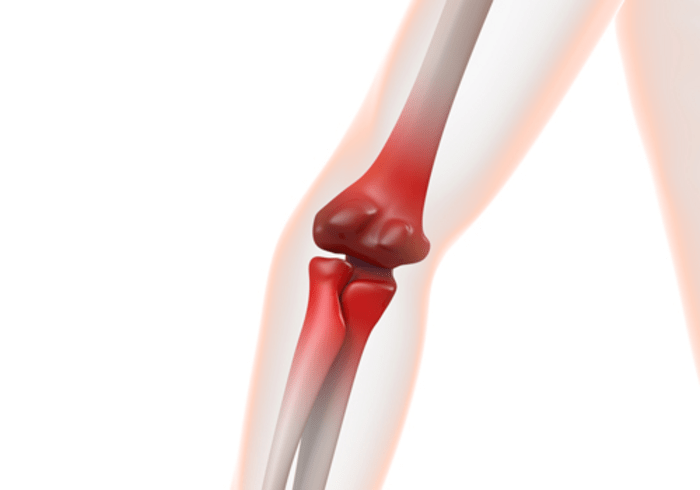(LOS ANGELES) – December 21, 2022 – A collaborative team, which includes scientists from the Terasaki Institute for Biomedical Innovation (TIBI), University of Illinois Chicago (UIC), and Pohang University of Science and Technology (POSTECH) has elucidated some key points on how the generation of cartilage in the joints is facilitated and how alternative bone formation can be avoided. Their findings could pave the way for designing more strategically engineered transplants for a less costly, more effective means of treating cartilage damage in the joints than current methods.
Due to the limited blood supply and the small number of cartilage cells in the joints, it is difficult for the body to heal its damaged cartilage. Current treatments include grafting a patient’s intact cartilage from one joint to a damaged one, increasing blood flow to the damaged joint by making small holes in the bone beneath the affected cartilage), or transplanting a patient’s cartilage cells from one joint to another. Each of these methods is costly and does not adequately restore functionality to the damaged joint.
A better option for cartilage repair involves the use of human mesenchymal stem cells (hMSCs), readily available cells which can renew and differentiate into various types of cells, including cartilage cells. With these cells, transplants can be engineered for more effective cartilage regeneration.
The joints of the body and their regulation of cartilage regeneration are exceedingly complex, influenced not only by chemical signals and external forces, but by mechanical properties within the joint itself. Within the joints, the cartilage cells are surrounded by two distinct layers – the pericellular matrix (PCM) and extracellular matrix (ECM). The PCM is a narrow, softer layer that closely surrounds the cartilage cells. The ECM is a stiffer layer surrounding the PCM that anchors and provides structural support to the cells. It is known that mechanical properties of the surrounding matrices can influence hMSC cartilage formation, with softer, faster-degrading matrices driving cartilage formation in the joints and stiffer, slower-degrading matrices promoting excessive cartilage growth that can lead to undesirable bone formation.
If one is to engineer implants to replace damaged cartilage, therefore, these micromechanical properties must be re-created as closely as possible to drive proper cartilage regeneration and integration with the healthy native cartilage. One must also factor in the effects of external mechanical stresses on the implants, which can influence cell behavior.
The researchers examined these properties and their effects by creating innovative cartilage tissue equivalents as models of native cartilage. To create a PCM model, they employed microfluidic technology to create uniformly sized mini hydrogel droplets embedded with hMSCs. These mini hydrogels were then encapsulated by a stiff polymer layer which simulated the ECM.
To simulate regular body movements upon the joints, the scientists used a chip that applied pressure on hMSC-laden PCM/ECM models with custom-engineered micromechanical property mismatches and measured the biomolecules produced. From these experiments, the scientists were able to find optimal conditions for better cartilage regeneration while also reducing excessive cartilage formation.
These results were also demonstrated in animal models. The PCM/ECM tissue models were next implanted in mice, and when the external pressure was applied, the tissues’ micromechanical mismatch effects on cartilage formation were successfully maintained for three-week periods.
The scientists’ overall conclusions were that PCM stiffness and degradation and the micromechanical mismatch properties of the PCM-ECM work in synergy with cyclic mechanical compression to drive desirable cartilage formation in hMSCs.
Said TIBI Director and CEO Ali Khademhosseini, Ph.D., “With the various difficulties presented in cartilage repair, our scientists’ work in understanding the mechanisms that govern it is a much-needed step in successfully creating functional and regenerative cartilage tissue.”
Authors are: Junmin Lee, Oju Jeon, Jaekyung, Han-Jun Kim, Sang Jin Lee, Yangzhi Zhu, Jihyun Song, Yeji Lee, Rohollah Nasiri, KangJu Lee, Praveen Bandaru, Hyun-Jong Cho, Shimming Zhang, Natan R. Barros, Samad Ahadian, Heemin Kang, Mehmet R. Dokmeci, Joanna Lee, Dino Di Carlo, Eben Alsberg, Ali Khademhosseini.
This work was supported by funding from the National Institutes of Health (AR066193), the National Research Foundation of Korea (NRF) grant (No. NRF2022R1F1A1068776) funded by the Korean government (MSIT) and the Brain Korea 21 FOUR project for Education and Research Center for Future Materials.
PRESS CONTACT
Stewart Han, shan@terasaki.org, +1 818-836-4393
Terasaki Institute for Biomedical Innovation
###
The Terasaki Institute for Biomedical Innovation (terasaki.org) is a non-profit research organization that invents and fosters practical solutions that restore or enhance the health of individuals. Research at the Terasaki Institute leverages scientific advancements that enable an understanding of what makes each person unique, from the macroscale of human tissues down to the microscale of genes, to create technological solutions for some of the most pressing medical problems of our time. We use innovative technology platforms to study human disease on the level of individual patients by incorporating advanced computational and tissue-engineering methods. Findings yielded by these studies are translated by our research teams into tailored diagnostic and therapeutic approaches encompassing personalized materials, cells and implants with unique potential and broad applicability to a variety of diseases, disorders, and injuries.
The Institute is made possible through an endowment from the late Dr. Paul I Terasaki, a pioneer in the field of organ transplant technology.
Journal
Matter
DOI
10.1016/j.matt.2022.11.008
Method of Research
Experimental study
Subject of Research
Not applicable
Article Title
Micromechanical property mismatch between pericellular and extracellular matrices regulates stem cell articular and hypertrophic chondrogenesis
Article Publication Date
2-Dec-2022

















